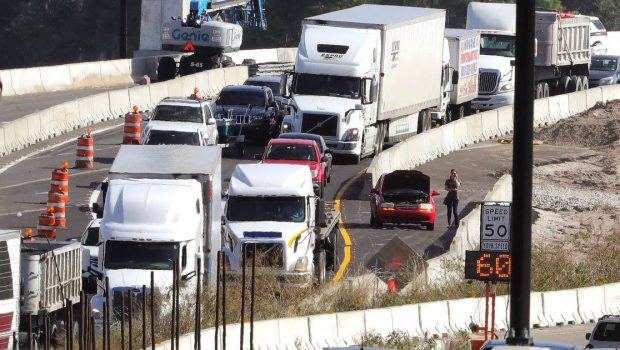Technology can help soothe your commuting woes
President Biden recently called for employees to return to their offices en masse, explaining that it’s economically important for Americans to “get back to work and fill our great downtowns again.” Many leading companies like Apple and Goldman Sachs have already heeded that call and are reopening their offices.
And while many workers are no doubt happy to see their colleagues in person again, they’re far less thrilled about the return of an old nemesis: traffic.
Pre-pandemic, Americans spent an average of 19 full workdays per year commuting — and showed up late to work around 77 days per year, thanks to congestion. Once COVID-19 hit, traffic delays dropped by nearly half across the country. Motorists saved 3.4 billion hours that they’d have otherwise frittered away in gridlock.
Commuters don’t want to return to the pre-pandemic status quo. And fortunately, they don’t have to. New technologies — especially artificial intelligence — have the potential to relieve bottlenecks on highways and commuter railways across the United States.
Take our highways and byways. AI has the power to regulate traffic flows in real-time by precisely timing traffic lights to respond to surges. In fact, such strategies, created by Google and others, have already reduced waiting times at stoplights by as much as 42% in Pittsburgh. In Israel, overall reductions in wait times are down 20%.

Political Pulse
Weekly
Get latest updates political news from Central Florida and across the state.
Rail station and subway “command centers,” meanwhile, help mitigate crowding in train stations around the world by relying on AI-enhanced predictions of crowd flows. This can automatically reroute commuters around stations with real-time signage, saving them valuable minutes and preventing overcrowded terminals.
When it comes to making sure the trains themselves run on time, AI also has a role to play. In the United Kingdom, for example, a signaling company recently used complex modeling and an AI engine to predict train delays, giving operators enough warning and timely recommendations to redeploy trains to where they’re needed most. AI shaved total lateness across London up to 200 total minutes each day.
AI’s not only useful for managing commuter flows, though. It can also stop tragedies before they happen. For instance, Remark Holdings helps public safety teams spot suspicious behavior or even potential terrorist threats through complex machine learning and automated surveillance video analysis.
The same firm contracted with Brightline, a Florida high-speed rail operator, to prevent unauthorized intrusions and enhance safety for passengers, drivers, and pedestrians on its tracks
.Of course, all the innovation in the world won’t be able to top the “commute” from bed to desk that many remote workers enjoyed during the pandemic.
But the return to the office is happening. Fortunately for workers, artificial intelligence is making that return quite a bit smoother than the commutes of old.
Craig Hagen is the former head of global government affairs for Electronic Arts. A former Orlando resident, he now lives in Sioux Falls, S.D., and Fort Lauderdale.








Gloss